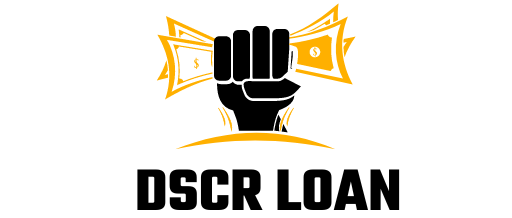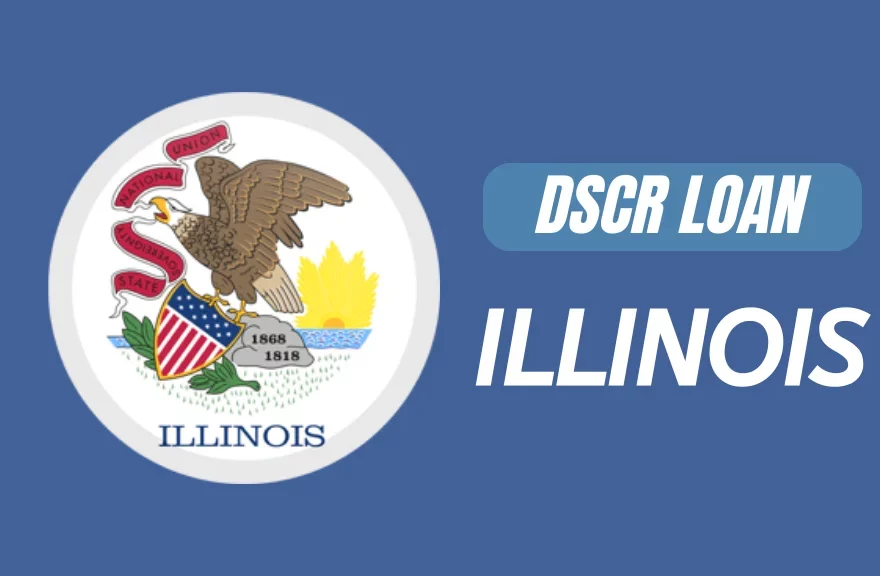A DSCR loan can help you get into the exciting real estate market because it’s approved based on the property’s cash flow, not your personal income.
What is DSCR loan Illinois?
A DSCR (Debt Service Coverage Ratio) loan in Illinois is a commercial real estate financing option that assesses a property’s income-generating capacity. Borrowers usually use this kind of loan for properties that generate income since lenders assess the property’s capacity to pay off debt. Lenders in Illinois may differ in terms of eligibility and specific terms.
In the context of Illinois, DSCR loans are commonly used by real estate investors and businesses looking to finance income-producing properties such as apartment buildings, office spaces, or retail complexes.
Interest rates of DSCR loans Illinois
The current DSCR (Debt Service Coverage Ratio) loan interest rate is 10%, though rates can fluctuate based on factors like the lender, DSCR ratio, down payment, and credit score. Typically, DSCR loan rates are 1-2% higher than conventional mortgage rates. Borrowers should consider these factors when assessing the overall affordability and terms of DSCR loans for commercial real estate financing.
Requirements for DSCR loan Illinois
- The specified requirements for a Debt Service Coverage Ratio (DSCR) loan in Illinois typically include:
- DSCR ratio of 1 or above
- Credit score of 620 (varies by lender)
- Down payment of 20%-25%
- Loan-to-value ratio of 75-80%
- Positive property cash flow
- Property appraisal form for market value assessment
- To calculate fair market rent, use the rent schedule form (1007 form).
How to calculate DSCR loan Illinois
To calculate the Debt Service Coverage Ratio (DSCR) for a loan in Illinois:
- Determine Net Operating Income (NOI) by subtracting operating expenses from total revenue.
- Identify Annual Debt Service, including principal and interest payments on the loan.
- A DSCR above 1 signifies adequate income to cover debt service; below 1 may indicate financial strain. Lenders often prefer higher DSCR ratios for loan approval.
What DSCR Loan Illinois is Required to Qualify?
Different lenders have different requirements for DSCR in Illinois. Most mortgage companies typically look for a DSCR of 1.25 (1.25x) or higher. However, a few lenders may accept a lower DSCR, like 1.0 or even 0.75. In rare cases, some lenders have no minimum DSCR requirement at all. Having a higher DSCR usually allows you to negotiate better terms for your mortgage.
Minimum DSCR rates required for lenders in Illinois
The minimum Debt Service Coverage Ratio (DSCR) required by lenders in Illinois can vary based on factors such as the type of property, the lender’s policies, and market conditions. Generally, lenders prefer DSCR ratios above 1 to ensure that the property’s income covers its debt obligations.
In commercial real estate financing in Illinois, it’s common for lenders to look for DSCR ratios of 1.2 or higher. This provides a cushion, ensuring that there is a excess of income to cover debt service and unexpected expenses.
Benefits of DSCR loan Illinois
The benefits of obtaining a Debt Service Coverage Ratio (DSCR) loan in Illinois include:
Commercial Real Estate Financing: DSCR loans are made for income-generating properties, making them suitable for investors and businesses looking to finance commercial real estate in Illinois.
Cash Flow Emphasis: DSCR loans prioritize the property’s ability to generate income, providing a financing solution that aligns with the cash flow dynamics of commercial properties.
Flexible Loan Terms: DSCR loans offer flexibility in terms of loan structure, allowing borrowers to choose between fixed or adjustable interest rates and various repayment periods based on their financial goals.
Diverse Property Types: These loans are applicable to a wide range of commercial properties, including apartment buildings, retail spaces, and office complexes, providing versatility for investors.
Risk Mitigation: Lenders often require a minimum Debt Service Coverage Ratio, mitigating risk by ensuring the property generates enough income to cover its debt obligations.
Investment Opportunities: DSCR loans can unlock opportunities for real estate investment in Illinois, allowing borrowers to grasp income potential of commercial properties.
Potential Tax Benefits: Interest payments on DSCR loans may be tax-deductible, providing potential tax advantages for property owners and investors.
What Factors are Mandatory for DSCR Loan Qualification
Before moving to qualification of DSCR loan in Illinois if you want to know deeply about DSCR loan, you can check our detailed article on DSCR Loan meaning.
When seeking a mortgage, investors often prefer DSCR loans over traditional methods because they are more borrower-friendly. Moreover, borrowers may find it easier to qualify for a DSCR loan without the need for income verification.
DSCR loans Illinois require less documentation to be verified, making the application process streamlined and more manageable for everyone involved.
Common DSCR qualifications for lenders in Illinois include considering the following factors:
- Loan Intention: Buy, Refinance, and Withdraw money
- Loan-to-value: In most DSCR loans, the maximum LTV (Loan-to-Value) ratio is 80%. This means that you can borrow up to 80% of the property’s value, and the remaining 20% is the down payment required for the DSCR loan.
- Types of property allowed: DSCR loans are typically available for various types of properties, including:
- Single-family residences (houses)
- Properties with 2-4 units
- Townhomes
- Condo hotels
- Standard and non-warrantable condos
- Apartment buildings with 5 or more units
- Other commercial structures
- Maximum Loan Amount: DSCR mortgage lenders usually have a maximum loan amount ranging from $1 million to $5 million.
- Monetary Reserves: You may be required to have 6-12 months’ worth of PITI (Principal, Interest, Taxes, and Insurance) payments in reserve.
- Maximum Number of Properties: There is no maximum limit on the number of properties you can own when it comes to DSCR loans.
- Usage of Property: DSCR loans are specifically designed for investment or rental scenarios and are not used for primary residences. They can be used for both short-term and long-term investment purposes.
- Penalty for Early Repayment: Lenders may impose a prepayment penalty if you pay off the loan or sell the property too soon. It’s important to review the loan agreement and ask your lender about any potential penalties.
- Closing costs covered by the seller: In some cases, sellers may agree to contribute to the closing costs. Although many lenders are open to this, they may have certain limits or conditions on the terms of such contributions.
- Debt-to-income ratio, income, and employment: When it comes to DSCR loans, no calculation of DTI (Debt-to-Income) is required. Personal forms of income are not considered unless the property’s income is insufficient to cover the loan payment.
- Estimating the future rental income from the property: The appraiser will fill out a Fannie Mae Form 1007, which is used to provide a professional estimate of rental income.
Applying procedure of DSCR loan Illinois
The application procedure for a DSCR loan in Illinois generally involves the following steps:
Prepare Documents: Collect all required documentation, including tax returns, financial records, and property information.
Choose a Lender: Do your research and look for a lender that offers DSCR loans with good terms and experience.
Initial Meeting: Schedule a consultation with the lender to discuss your financials, property, and loan requirements.
Submit Documents: Provide essential documentation, including property appraisal forms, rent schedules, and financial statements.
Underwriting: The lender evaluates your financial situation, property details, and creditworthiness during the underwriting process.
Property Appraisal: A professional appraisal assesses the current market value of the property.
Loan Approval: Upon successful evaluation, the lender approves the loan, outlining terms and conditions.
Closing: Finalize the loan agreement, sign necessary documents, and make the required down payment.
Conclusion
The DSCR is crucial in these loans as it helps investors and analysts assess the financial strength of an investor. While the specific ratios may vary, DSCRs above 1.25 are generally considered favorable.
Now is an excellent time to buy properties in Illinois as their values are increasing. If you’re considering investing in real estate, one of the best financing options is a DSCR loan. These loans are specifically designed for investment properties and are based on the property’s net operating income. This makes them less risky for lenders and easier for investors to qualify for compared to other loan types.
FAQ’s
- Will the DSCR loan best fit me?
If you want to expand your investment portfolio in Illinois but don’t meet the requirements for a traditional loan, DSCR loans can be a suitable financing option.
- How can I apply for a DSCR Loan in Illinois?
Choosing the right funding source can have a significant impact on your success as an investor. Griffin Funding is the top choice for DSCR loans in Illinois, offering mortgage lenders that can provide the financing you need with minimal hurdles.
- What is the DSCR loan’s interest rate?
The DSCR loan interest rates index is currently at 7.58%. This is influenced by a decrease in US Treasury yields and 5-year interest rate swaps caused by instability in the banking sector. However, there is an anticipated 0.25% increase in the Fed Funds Rate.
- What DSCR percentage is ideal for term loans?
A DSCR ratio of 1 or higher is considered good, and the higher the ratio, the better. A ratio above 1 means that the property generates enough cash flow to cover its debt payments. However, a ratio below 1 indicates that there is not enough cash to cover the debt obligations.

Introducing Emily Parker, a seasoned professional with over 5 years of expertise in DSCR loans. With her extensive knowledge and experience in the field, Varsha has consistently demonstrated a deep understanding of DSCR loan intricacies and a proven track record of delivering successful outcomes for her clients.


